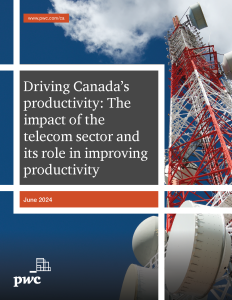Mapping the digital divide
Last month, the Dais at Toronto Metropolitan University released an update to its flawed 2021 report, “Mapping Toronto’s Digital Divide” [pdf, 3.8MB]. You may recall that the 2021 report was used to support a misguided proposal for the City of Toronto to build its own fibre network in what is already one of the world’s most connected cities.
The new report, “Toronto’s Digital Divide” [pdf, 12.4MB], notes that 98% of Toronto residents have internet service in their home. The new report no longer blames inadequate infrastructure; price is cited as the top reason households remain unconnected. This “underscores the need for Canada to address the cost barrier of internet services for lower-income people.”
Fortunately, the telecom sector has done just that, with lower cost connections available through programs like Rogers Connected for Success, TELUS Internet for Good, and the industry led federal program, Connecting Families. The report acknowledges that “4% of Toronto residents have a home internet plan that costs them $20 a month or less”.
I have written previously that we learned that it isn’t enough to offer low-priced computers and $10 per month broadband.
Georgetown University economist Scott Wallsten described [pdf, 1.8MB] studies conducted by the FCC associated with its Broadband Lifeline service. Those studies tested consumer responses to a range of issues, including preferences for speed, the effects of different levels and types of discounts.
The FCC found “only about ten percent of the expected number of households signed up, even with the price of one plan set at $1.99 per month.” The research also uncovered a significant aversion to digital literacy training classes. “In one project, many participants were willing to forego an additional $10 per month savings or a free computer in order to avoid taking those classes.” It would be interesting to see this research updated by a Canadian study, perhaps working under the umbrella of the Connecting Families project.
The Dais report looked at speeds and total monthly bills for internet and mobile services observing a variability by income. Unfortunately, the study did not appear to normalize these for the variability of household size by income quintile. To that end, I found it was worth looking at Statistics Canada’s Survey of Household Spending for some analysis. When I last looked at the data 9 years ago, the average size of a household in the lowest income quintile was 1.49 members. The highest income quintile averaged 3.34 members. Obviously, with more people living in the household, there would be more cell phones, and more internet connected devices, with increased communications services demands, all contributing to higher bills. It would be important for the next iteration of this research to normalize spending analysis for household size.
Attaining universal adoption of digital technologies is the objective. I concur with the Dais concluding statement. “As Toronto looks forward to the next stages of its digital transformation, taking a broad lens of digital inclusion will provide better and more equitable outcomes for residents. Only when all residents have both access to the internet and the ability to use it effectively will we have overcome the full digital divide.”
It isn’t enough to have affordable broadband at everyone’s doorstep; we need to understand and address those factors that inhibit adoption. More research is needed to develop skills, and to develop strategies for overcoming digital phobias among underserved populations.

